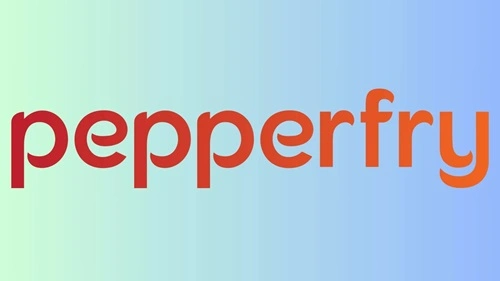Pepperfry, founded in 2012 by Ambareesh Murty and Ashish Shah, is one of India’s leading online furniture and home décor platforms. Over the years, it has become synonymous with stylish, high-quality, and affordable furniture that caters to the diverse needs of Indian households. With its omnichannel presence and innovative business model, Pepperfry has carved out a significant share of the burgeoning furniture and home décor market in India. This article delves into Pepperfry’s business model and explores how the company generates revenue.
Overview of Pepperfry’s Business Model

Pepperfry operates on a marketplace model, serving as an aggregator that connects furniture manufacturers, artisans, and sellers with end customers. Its business model revolves around:
- Online Platform: Offering an extensive range of furniture, home décor, and modular solutions via its website and mobile app.
- Omnichannel Presence: Establishing offline studios where customers can experience products before purchasing online.
- Customizable Solutions: Providing personalized and modular furniture options to meet individual preferences.
- Asset-Light Strategy: Focusing on being an intermediary rather than owning manufacturing facilities, allowing scalability.
Pepperfry’s combination of online convenience, offline experience, and curated product offerings appeals to India’s growing middle and upper-middle-class segments.
Revenue Streams
Pepperfry earns revenue through multiple channels, ensuring profitability and scalability:
a) Marketplace Commission
Pepperfry’s primary revenue source is the commission it earns from sellers on every transaction. Acting as a marketplace, Pepperfry connects furniture manufacturers, artisans, and brands with buyers.
How It Works:
- Sellers list their products on Pepperfry’s platform.
- For every successful sale, Pepperfry charges a commission ranging from 8% to 20%, depending on the product category and price.
This model ensures that Pepperfry does not have to invest heavily in inventory, keeping its operations asset-light.
b) Private Label Products
Pepperfry offers its own private-label furniture and home décor products under brands like Woodsworth, Mintwud, and CasaCraft.
Revenue Source:
- These products generate higher margins since Pepperfry controls both production and pricing.
- Exclusive collections under private labels attract repeat customers and foster brand loyalty.
c) Furniture Rentals
Pepperfry operates a furniture rental service, catering to young professionals, students, and individuals in urban areas who prefer renting over purchasing furniture. Popular rental items include:
- Sofas, beds, and wardrobes.
- Office furniture and home appliances.
Revenue Source:
- Monthly rental fees.
- Additional revenue from delivery and setup charges.
d) Pepperfry Studios (Offline Experience Centers)
Pepperfry has established offline studios across major cities in India, allowing customers to experience products before buying them online.
Revenue Source:
- In-store sales generated through customer visits.
- These studios also act as touchpoints for customers to receive assistance with modular furniture and home interior projects.
e) Modular Solutions
Pepperfry has entered the modular kitchen and wardrobe segment, offering customized solutions. Customers can design and order modular furniture tailored to their space and preferences.
Revenue Source:
- Revenue from modular furniture sales.
- Charges for installation, design consultation, and after-sales service.
f) Advertising and Sponsored Listings
Pepperfry offers advertising opportunities to sellers and third-party brands. These include:
- Sponsored Product Listings: Sellers pay to feature their products prominently on the platform.
- Display Ads: Furniture-related brands advertise their products to Pepperfry’s audience.
Revenue Source:
- Advertising fees based on impressions or clicks.
- Sponsored listings that provide greater visibility for sellers.
g) Logistics and Assembly Services
Pepperfry offers end-to-end delivery and assembly services, ensuring a hassle-free experience for customers.
Revenue Source:
- Delivery charges for select orders.
- Fees for professional assembly services.
h) Subscription-Based Services
Pepperfry offers subscription plans for businesses, such as interior designers and real estate developers, who frequently require furniture and décor items.
Revenue Source:
- Subscription fees for exclusive discounts and priority service.
i) Corporate and B2B Sales
Pepperfry caters to businesses by providing bulk furniture solutions for:
- Offices and co-working spaces.
- Hotels, restaurants, and real estate showrooms.
Revenue Source:
- Bulk order deals and long-term contracts with corporate clients.
Cost Structure
Running a furniture marketplace like Pepperfry involves various operational expenses:
a) Technology and Platform Maintenance
Pepperfry invests heavily in:
- Maintaining its e-commerce platform and mobile app.
- Implementing AR/VR features like visualization tools to let customers see how furniture fits in their homes.
b) Marketing and Customer Acquisition
Pepperfry spends significantly on:
- Digital advertising campaigns (Google Ads, social media, and influencer marketing).
- Traditional advertising, including TV and print media, to build brand visibility.
c) Logistics and Warehousing
Managing a seamless delivery experience involves costs related to:
- Warehousing furniture across multiple cities.
- Delivery logistics, especially for bulky furniture items.
d) Offline Studios
Operational costs for Pepperfry Studios include:
- Rent, utilities, and maintenance.
- Staffing and product display setup.
e) Customer Support and After-Sales Service
Providing support for queries, returns, and installation requires a dedicated team.
Unique Features Driving Revenue Growth
Pepperfry employs several strategies to differentiate itself and drive revenue:
a) Wide Product Range
With over 100,000 SKUs across categories like furniture, décor, and lighting, Pepperfry caters to diverse customer preferences.
b) Customization
Offering modular and customizable furniture allows Pepperfry to serve niche customer requirements, boosting sales.
c) Omnichannel Strategy
By integrating online and offline experiences, Pepperfry enhances customer trust and satisfaction.
d) AR/VR Technology
Features like 3D visualization help customers make informed purchase decisions, reducing returns and increasing conversion rates.
e) Focus on Rentals
Furniture rentals tap into the growing demand among urban millennials, creating an additional revenue stream.
Challenges and Opportunities
Challenges
- High Competition: Competing with players like Urban Ladder, IKEA, and Amazon Home poses challenges.
- Operational Costs: Logistics and warehousing costs for bulky furniture items remain high.
- Price Sensitivity: Customers often compare prices across platforms, affecting margins.
Opportunities
- Tier 2 and Tier 3 Cities: Expanding into smaller cities can tap into a growing demand for quality furniture.
- Sustainability Trends: Offering eco-friendly furniture can attract environmentally conscious consumers.
- Corporate Partnerships: Collaborating with real estate developers and businesses can open new revenue streams.
Financial Overview
Pepperfry has raised significant funding from investors such as Norwest Venture Partners and Goldman Sachs. While the company has yet to achieve profitability, its focus on scaling operations, expanding offline studios, and introducing new services positions it well for long-term growth.
Conclusion
Pepperfry’s business model combines the scalability of an online marketplace with the trust and convenience of an omnichannel strategy. By focusing on innovation, customization, and customer-centric services, Pepperfry has established itself as a leader in India’s furniture and home décor market. With continued expansion into untapped markets and investment in technology, the platform is poised for sustained growth in the evolving furniture retail landscape.

